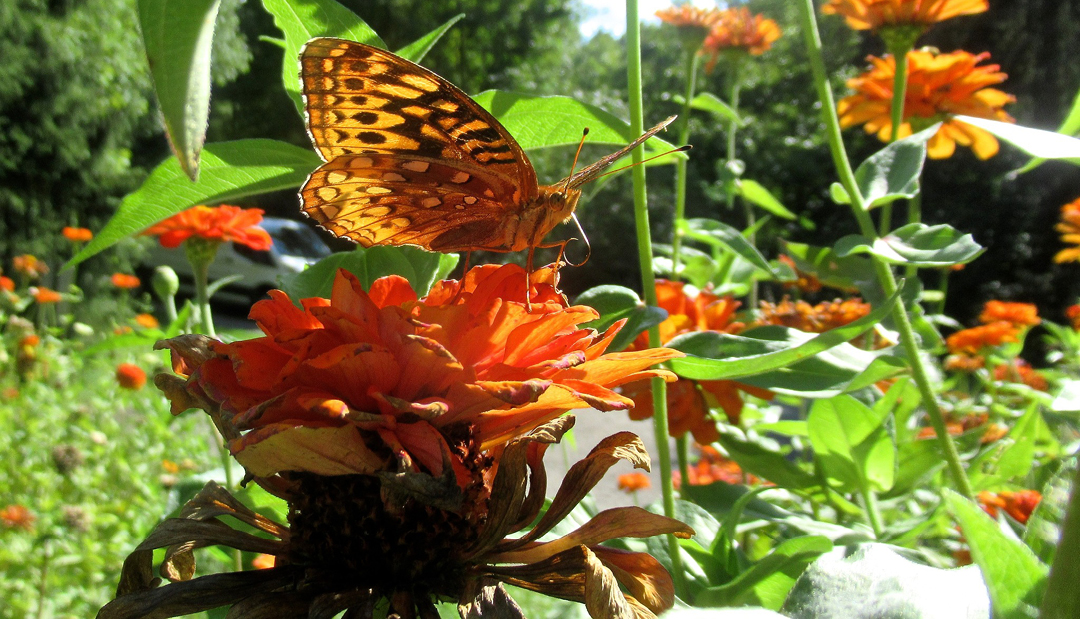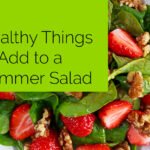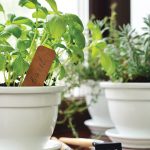Submitted by PAM VARGA, Sahli Park Manager
The next time you eat a piece of pizza, say, “Thank You” to a Bumblebee. Bumblebees pollinate the blossoms that become the tomatoes that make the sauce for your pizza. Without bees, no tomatoes, no sauce, no pizza. In fact, one third of the food we eat comes from plants that are pollinated by bees and other insects including butterflies, moths, wasps, beetles and flies. Hummingbirds are pollinators, too. However, the populations of our pollinators and humming birds are in serious decline due mostly to loss of habitat and use of pesticides. Planting a garden for pollinators will provide much needed habitat as well as add color and beauty to your home landscape. In your veggie garden growing plants that attract pollinators will increase plant production resulting in more fresh veggies for you and your family, including tomatoes for pizza sauce.
Here are some tips for creating a pollinator garden.
1. Use native plants. Native plants are those that grew here in North America before European settlement. Over thousands of years, native plants and insects have developed an interdependent relationship. Plants have developed colors, shapes, and scents to attract insects that will pollinate the flowers and insure the survival of the species. Insects, in turn, receive food in the form of pollen and nectar. Horticulturists have bred forms of native plants that have different shapes and colors. These “cultivars” or “nativars” often have less pollen and nectar, and the nectar has a lower nutritional value. You can check on-line with the USA Plant Database and other sites to see which plants are native to our area.
2. Plant in drifts. A drift is a group of 5-7 or more of the same plant. Pollinators will spot a large group of flowers much more easily than one or two. The pollinator will also use less energy foraging for food within a group of flowers rather than flying longer distances between plants.
3. Plant a variety of shapes and colors. Different pollinators are attracted to differently shaped flowers. Butterflies need a flat landing pad like a Zinnia or Daisy. Bees can crawl down into bell or tube shape blossoms to find pollen. Butterflies are especially attracted to flowers that are red, yellow, orange, pink and purple. Bees cannot see red, and attracted more by the flower shape. Hummingbirds are mostly attracted to red, orange and pink tubular flowers.
4. Choose a variety of flowers that will be in bloom from early spring through late fall. Different insects are active at different times of the year.
5. Using a variety of annual and perennial flowers, flowering vines, and flowering trees and shrubs will add interest, height and texture to your landscape and attract a variety of pollinators.
6. Plant host and nectar plants. Butterflies need not only nectar to sip, but they need a place to lay their eggs. Plants that provide food for caterpillars are called host plants. Each species of butterfly lays its eggs only on specific plants. For example, Monarch caterpillars can eat only milkweed plants, and Black Swallowtail caterpillars eat dill, fennel, parsley, and Rue. You need to feed caterpillars if you want to have butterflies in your garden.
7. Add a puddle. Insects need water to drink, and many butterflies get the minerals they need by sipping water from mud puddles. I know, drinking muddy water – Yuk! But remember you’re a human not a butterfly. Fill a shallow pan such as a pie plate or the top of a bird bath with clean gravel. Place a few flat rocks on top of the gravel and fill with water to just cover the gravel. Insects cannot land on open water to drink. They will land on the flat rocks and use their tongues to lap up the water. You can also make a mixture of compost, potting soil and water that is the consistency of oatmeal and place it in a shallow pan. Butterflies will sip the soil cocktail to get needed minerals.
8. Finally, and probably most important, eliminate the use of pesticides. Pesticides don’t distinguish between good bugs and bad bugs. Pesticides kill them all. Many pesticides are systemic and travel through all parts of the plant, including nectar and pollen. When butterflies and bees sip the flower nectar, it’s like giving them a cup of arsenic. It’s OK if there is some insect damage in your garden. It shows that your garden is providing a healthy habitat. If you have problems with Aphids, don’t spray them, squish
them! Another Yuck!







